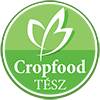With the support of our stable Hungarian producer base, this vegetable is always available in high quality in our wholesale assortment – ask us for an offer!
Early potatoes are thin-skinned, tenderer-textured tubers harvested earlier than traditional potatoes. This vegetable is one of the most eagerly awaited heralds of spring, winning over customers with its freshness and slightly sweet taste. Early potatoes have the peculiarity of being harvested before they are fully ripe and therefore deteriorate more quickly, but their flavour and texture are unrivalled compared to potatoes available at other times of the season.
Historically, potatoes originated in South America, arrived in Europe in the 16th century and have been one of our most important food crops ever since. The consumption of new potatoes is particularly widespread in Mediterranean countries, especially Spain, Italy and Greece, but also has a long tradition in Hungary.
From a health perspective, early potatoes are an excellent source of fibre, potassium and vitamin C. Because the tuber structure is not yet fully hardened, it contains less starch and is therefore easier to digest than fully ripe potatoes. Its glycaemic index can be lower, which can be beneficial in certain diets.
Specificities of its production
Early potatoes are usually grown in the open field, but in some areas, especially for early harvesting, they are also grown in foil or in greenhouses. In Europe, the largest producers of new potatoes are France, Spain, Italy and the Netherlands. It is also widely cultivated in Hungary, mainly in the Southern Great Plain, Southern Transdanubia and around Lake Balaton.
The season runs from April to July. The earliest arrivals of early potatoes are usually from Mediterranean countries and appear on store shelves as early as the end of April. The Hungarian crop starts to arrive in May and usually peaks in June and July. After July, the ripe potatoes are ready for storage.
How to choose good quality early potatoes?
Freshness is one of the most important criteria when choosing early potatoes. It is worth considering the following characteristics:
- The tubers should be firm and smooth to the touch, with a thin skin that is easy to rub off.
- Avoid specimens that are soft to the touch or show dark spots or greenish discolouration – the latter may contain solanine, which is mildly toxic.
- The smell of fresh new potatoes can also be a tell-tale sign: pleasantly earthy and fresh-smelling, they should not have an unpleasant, mouldy smell.
- If you have the option, choose local, seasonal produce, which has a smaller ecological footprint and is often fresher.
How to use early potatoes in the kitchen?
A big advantage of early potatoes is that they can be eaten with their skins on, so preparation is quick and easy. In most cases, it is sufficient to wash the skin thoroughly, or to scrub it off with a brush.
- Baked: drizzled with olive oil and sprinkled with garlic and rosemary, it is one of the most popular forms of roast.
- Cooked: cooked in lightly salted water and sprinkled with butter and parsley, it is a classic Hungarian spring dish.
- In salads: in cooked form it is an excellent base for potato salads, especially with vinaigrette or yoghurt dressing.
- Grilled: on skewers, grilled with vegetables and meat, it’s also a great choice.
How to store early potatoes?
Early potatoes are more delicate and deteriorate more quickly than fully ripened potatoes, so storage requires special care:
- Store in a cool, dark, well-ventilated place – ideal temperature is between 7-10°C.
- Do not store in the fridge, as starch quickly turns to sugar at low temperatures, which can change the taste and texture.
- Preferably do not store in plastic bags – paper or canvas bags are best, as they help prevent clogging and mould.
- For the best taste experience, eat it within a few days of purchase.
Interesting facts about early potatoes
- The skin of the early potatoes is so thin that you can easily scrub it off by hand – something many people prefer because you don’t have to peel it.
- They can vary in colour: most early potatoes are light yellow or creamy white, but there are also varieties with pinkish skin.
- Although it is mainly used in savoury dishes, some nations, such as Sweden, also eat new potatoes with honey or sweet sauce.
- The freshness of early potatoes can sometimes even be indicated by a moist soil surface, which indicates that they have recently been pulled out of the ground.
Tips for using early potatoes in the kitchen
- If you want to cook them quickly, cut the tubers in half or quarters – they will soften perfectly in less time.
- Before baking, boil the new potatoes slightly so that they are crispy on the outside and creamy on the inside.
- Use it with fresh herbs: parsley, dill, rosemary and chives go particularly well with it.
- It’s also a great base for one-dish meals – in vegetable casseroles and casseroles with meat.


